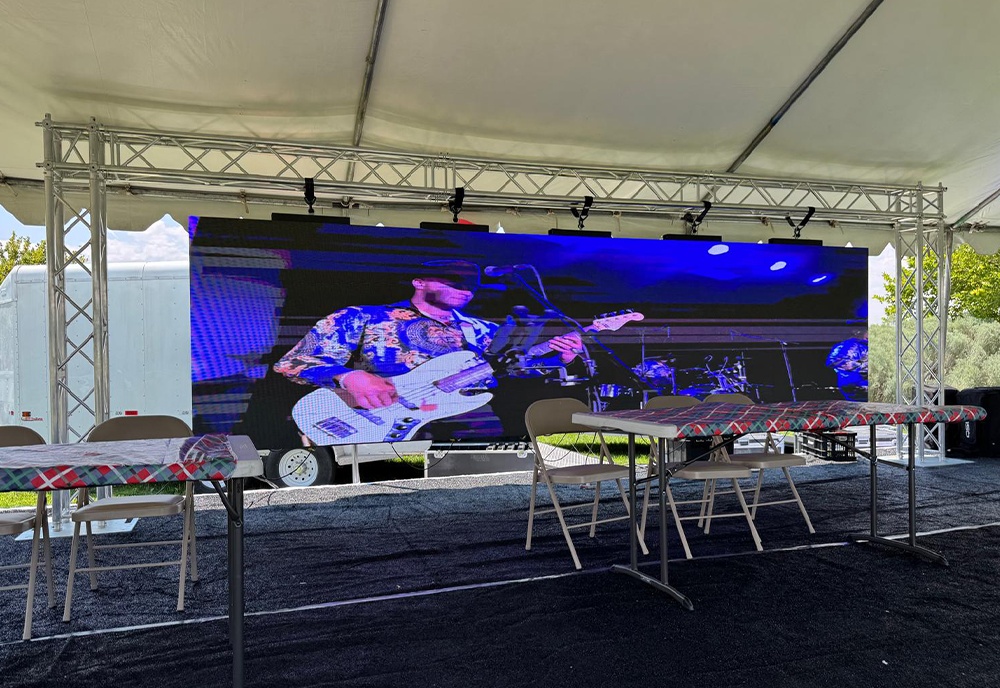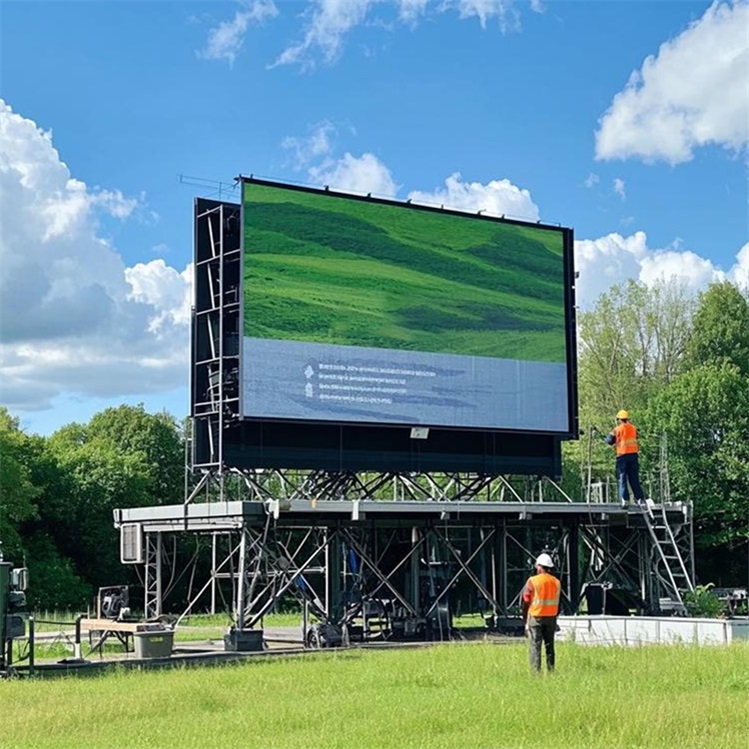In today’s digital age, LED displays have become an integral part of our daily lives. Whether indoors or outdoors, from large billboards to small televisions, LED displays play a vital role in a wide range of settings. However, many people lack understanding of key concepts and technologies related to LED displays, one of which is refresh rate. What is refresh rate? And what role does it play in LED displays?
The concept of refresh rate
Refresh rate, also known as “visual refresh rate” , refers to the number of times a display updates its image per second, measured in Hertz (Hz). This directly impacts the quality of images displayed on LED screens. In other words, it indicates how many times per second the screen can “refresh” a new image, maintaining a smooth and stable display. A higher refresh rate means more frequent image updates, resulting in a smoother display.
Technically, the refresh rate is controlled by the driver IC, and different driver chips have a significant impact on the refresh rate. Ordinary driver chips typically have refresh rates of 960Hz or 1920Hz, This is low refresh rates. High-definition, high-order PWM driver chips, on the other hand, can reach 3840Hz or even 7680Hz.
In terms of scanning, through “time-sharing power supply”, only some pixels are lit at the same time. That is, the driver IC alternates powering different groups, such as 1/16, 1/21, and 1/32 scans. A larger denominator means more pixels per group, and a lower frequency of rotation, saving power.
For example, a 1/32scan display divides all rows into 32 groups and lights them up in turn. Instead of illuminating all rows simultaneously, the driver IC rapidly illuminates the first, second, third, and so on, group 32, in sequence within a very short period of time. At a high refresh rate, this rotation is so rapid that, leveraging the human eye’s persistence of vision, we see not 32 groups of lights flickering, but a complete, stable image.


The importance of LED display refresh rate
- The refresh rate determines the stability of the LED display’s image and its flicker-free display. A low refresh rate can cause imperceptible flickering on the screen, leading to eye fatigue and dryness after prolonged viewing. A high refresh rate ensures that the LEDs are almost always on, effectively reducing flicker and lowering visual strain. The higher the refresh rate of an LED display, the more stable the image and the less visual flicker.
- High refresh rate LED display screen shoots without horizontal stripes. The main difference between low-refresh and high-refresh LED displays is that when a mobile phone or camera captures an LED display, black scan lines or ripples appear on the screen. These are indistinguishable to the naked eye, but can be clearly seen on mobile phones and video cameras.
- LED display screen ghosting/black screen. Low refresh rates can easily cause ghosting or stuttering when displaying dynamic content. Conversely, high refresh rates provide smoother transitions, capturing more detail in scenes like stage performances and live sports events. With low refresh rates, the LED screen image captured by the camera may appear entirely black or have partial content lost.
How to choose the refresh rate
Depending on the scenario, we should choose different refresh rates. Ningshine LED screen refresh rates are no longer limited to low refresh rates such as 960Hz and 1920Hz. 3840Hz is now the standard, and 7680Hz has become a reality.
- 3840Hz LED display
3840Hz is no longer just a number, it boasts smoother, clearer images. Ningshine widely uses its 3840Hz refresh rate Led video wall in various scenarios. Including indoor fixed-mount LED displays, COB displays, and outdoor fixed-mount LED displays, such as control rooms, retail buildings, and broadcast studios. Because these locations require excellent image quality to convey information, 3840Hz LED displays have never disappointed customers.
- 7680Hz LED display
7680Hz LED displays deliver exceptional visual quality and ultra-smooth motion in real time. 7680Hz LED screens offer virtually no motion blur, elevating the visual experience to a whole new level. Ningshine’s rental series has applied 7680Hz refresh rate with pixel pitch ranging from 1.95mm to 4.81mm indoors and 2.6mm to 4.81mm outdoors, ensuring crisp, flicker-free images.
Summary
The refresh rate of an LED display is a key performance indicator that directly affects our visual experience and comfort. For LED displays, the higher the refresh rate, the smoother the display. Choosing the appropriate refresh rate for your LED display depends on the different refresh rate requirements for different application scenarios.
